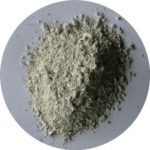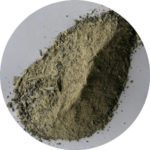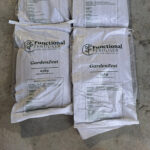In the short-term waterlogged soils require sunshine and warmth. Nothing else will speed recovery, with more rain slowing the process.
Frosts are useful as they lift moisture from the soil and the bright sunny days that follow increase the amount lost via evaporation.
It defies logic to fly nitrogen onto soils too wet to ground spread. The issue is too much water and not enough air in the soil, and nitrogen does nothing to alleviate either.
Money is best spent on high energy and fibre supplement, top quality meadow or lucerne hay the best combination of both.
Rumens require long fibre to provide a mat to function efficiently and hay is an excellent solution and made freely available animals will eat no more than required to maintain body temperature and weight.
The long-term fix is to increase soil pore space, the space between soil particles that allows water to percolate downwards.
There must be somewhere for the water to go, and each individual situation is different however what can be influenced is the top 25mm of the soil, the area in which pasture roots are concentrated.
During periods of prolonged wet weather animals will create a mess, it’s unavoidable. The decision is whether to have a small mess over a large area by spreading animals out, or contain it to a small area that can be sorted later.
There’s no perfect answer and it’s important for those that object to animals on crop in wet weather understand the constraints that farmers work under.
Soil temperature is one of the drivers of spring growth with temperatures above 10℃ indicating the start of spring growth.
Excessively wet soils often have temperatures of around 10℃ however it is not until they dry out somewhat that temperatures will rise significantly, and optimum spring growth will be obtained. Wet land is cold land.
After prolonged periods of wet weather soils may become anaerobic, beneficial soil life is largely lost and soil odour becomes increasingly sour.
Re-establishing conditions under which pastures thrive can take months and much of the coming season’s growth lost if action is not taken. Recovery however can be remarkably rapid without the need to cultivate.
Physical aeration to a depth of 25cm breaks up compacted soils and when combined with an application of CalciZest, a lime-based soil improver from Functional Fertiliser containing a wide range of soil friendly fungi and bacteria, steady recovery can be achieved.
The addition of soil friendly microbes kick starts the process and with regular rainfall and sympathetic grazing management pastures can be nursed back to health reducing the slow growth phase.
Even in the worst situations earthworms are likely to exist in sufficient numbers to provide benefits over the coming months.
They do an excellent job of creating channels through which water drains and air enters. By creating the environment that favours their activity all other beneficial soil dwellers proliferate, and the key is ongoing inputs of calcium in the form of lime, dolomite, and soft phosphate rock.
Where cultivation is the best option the application of CalciZest and extra lime will help with soil tilth, germination of seed will be more rapid as will growth during the establishment phase.
The addition of clover seed may also be beneficial as clover dense pasture grows more strongly over summer when grasses naturally go to seed due to a combination of soil temperatures above 20℃ and longer sunlight hours.
Animals grow and fatten more quickly on a high clover diet as clover contains the calcium necessary for rapid bone growth. Clover is also more digestible, so animals can eat more in their naturally designated grazing time.
Because clover fixes nitrogen reliance on synthetic nitrogen is reduced creating a situation that is genuinely carbon positive.




